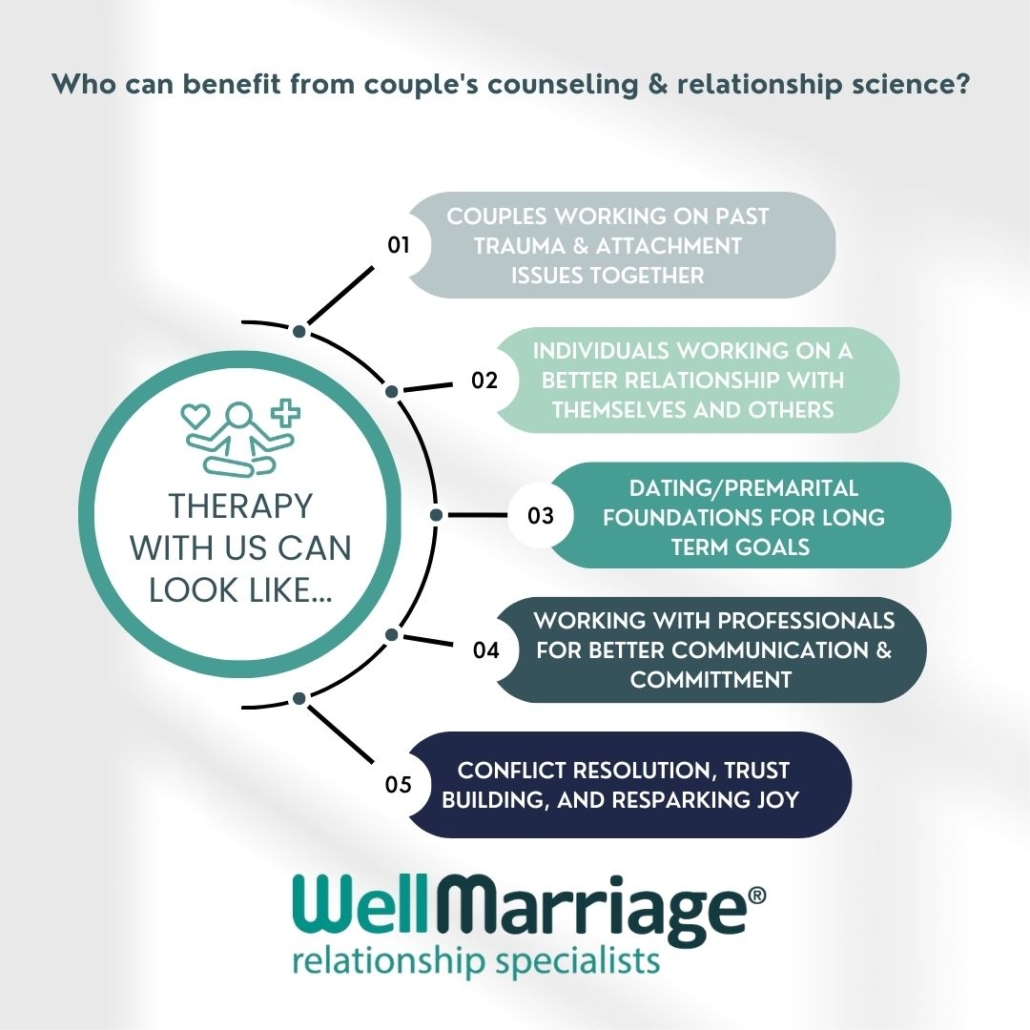The Buzz on Aim Point Counseling
The Buzz on Aim Point Counseling
Blog Article
Getting My Aim Point Counseling To Work
Table of ContentsThe Greatest Guide To Aim Point CounselingThe 5-Second Trick For Aim Point CounselingThe 7-Minute Rule for Aim Point CounselingThe Single Strategy To Use For Aim Point CounselingThe smart Trick of Aim Point Counseling That Nobody is Talking AboutThe Only Guide to Aim Point Counseling
The longitudinal layout involves a pre-treatment study and two follow-up surveys at 3- and 12-months post-intervention. The research is embeded in 8 Relationships Australia Victoria centres, throughout cosmopolitan, outer suburban areas, and regional/rural sites. Relationships Australia, a non-government organisation, is the biggest provider of pair coaching and partnership services in Australia.
In Australia, the typical size of marital relationship before splitting up is 8.8 years, and around fifty percent of all separations involve couples with kids [1] These high prices of relationship breakdown have been consistently related to unfavorable health and wellness repercussions for both grownups and kids complying with divorce/separation. These include isolation from support networks, and lowered earnings and requirement of living for both adults and kids [3], predicaments of loyalty over youngsters for men, and depression and loss of identification for ladies [4,5]
What Does Aim Point Counseling Mean?
Longitudinal researches also recommend that kids of separation have a greater incidence of psychological conditions, drug and alcohol use, and risky sex-related practices [7] The effects of separation and separation can be detrimental, research indicates that high connection dissonance in undamaged couples is also likely to have adverse outcomes.
Study to day has identified both couple and individual factors that might add to connection disharmony. These include connection complete satisfaction and commitment at the couple level, and clinical depression at the individual level.
Excitement About Aim Point Counseling
While a lot of research studies show renovations in partnership satisfaction complying with pair counselling, they are restricted by the examples and actions utilized, mainly temporary follow-up time frames, and analyses that do not account for the dyadic nature of pair information., is an additional frequently explored relationship end result.
To summarise, research indicates that couple-specific variables in addition to individual aspects might predict the end results of pair counselling and connection solutions. The causal instructions of these relationships, nevertheless, is less clear. These observations are very important, since, to validate and guide the application of relationship services such as pair counselling, empirical evidence must check out both the outcomes of partnership services and the aspects that anticipate effective treatment.
, at the very least in some European countries.

We currently understand little concerning the accounts of couples who look official statement for out partnership education and learning contrasted with those who seek connection coaching, or the results of these programs. Unscientific evidence suggests that there might be substantial distress amongst at least some couples seeking connection education and learning. Connection education programs vary from pair counselling as they are typically very structured, performed in teams, and concentrate on a mix of 4 elements; recognition, feedback, cognitive modification, and abilities training [45]
Some Known Questions About Aim Point Counseling.
Feedback entails individuals finishing surveys about their partnership (e.g. procedures of social problems), and receiving info on what their ratings indicate. Cognitive-behavioural approaches advertise transforming cognitions to facilitate favorable partnerships.
These meta-analyses highlight limitations in the current literary works on connection education and learning. This example profile may not represent customers who usually present for partnership education.
Fascination About Aim Point Counseling

Really little research has actually checked out the comparative benefits of couple counselling and relationship education and learning programs. As clients are most likely to self-select right into these solution kinds, it is not clear whether particular connection distress profiles existing to each solution type, or without a doubt whether there is a communication in between presenting account, solution kind and end result.
(https://telegra.ph/Aim-Point-Counseling-Steering-Your-Soul-Through-Lifes-Uncharted-Waters-03-07)
Hence, we have included a 12-month follow-up to assess longer-term patterns and effects.
Consequently, we recommend to utilise multi-level analytical modelling procedures that manage for the inter-dependence of couple information to assess any treatment results. The details purposes of the ECC research study are to: 1. Map accounts of clients looking for area agency-based couple coaching vs. relationship improvement programs in regards to socio-demographic and relationship signs (such as relationship contentment, partnership commitment, social problems, and factors for attending), along with health and wellness (such as depression, basic well-being) and wellness service usage (eg.
2. Identify whether pair coaching and connection education and learning solutions improve three- and twelve-month results for relationship contentment, dedication, and depression, utilizing analytical evaluations proper to pair data. 3. Figure out the relative contributions of client elements (individual and couple) and therapy/education factors to results at 3- and 12-months, and to sustainability of end results over time.
The smart Trick of Aim Point Counseling That Nobody is Talking About
Multi-level modelling to figure out pre-post differences, regulating for dyadic (pair) degree. To add to the literary works assessing the effectiveness of community-based couple counselling. The outcomes will assist clinical decision-making in community-based connection service settings, and professional training. 3. To establish the relative contributions of client/couple and treatment variables to results at 3- and 12-months, and to sustainability of outcomes gradually.
Report this page